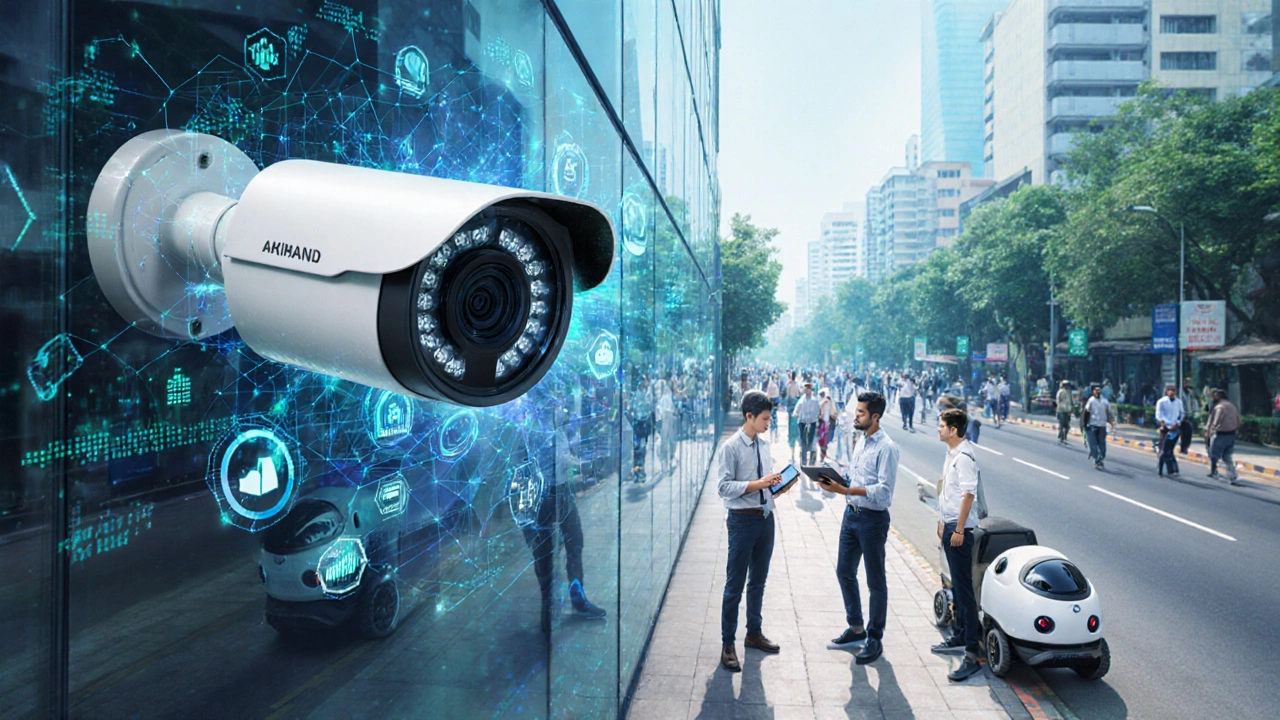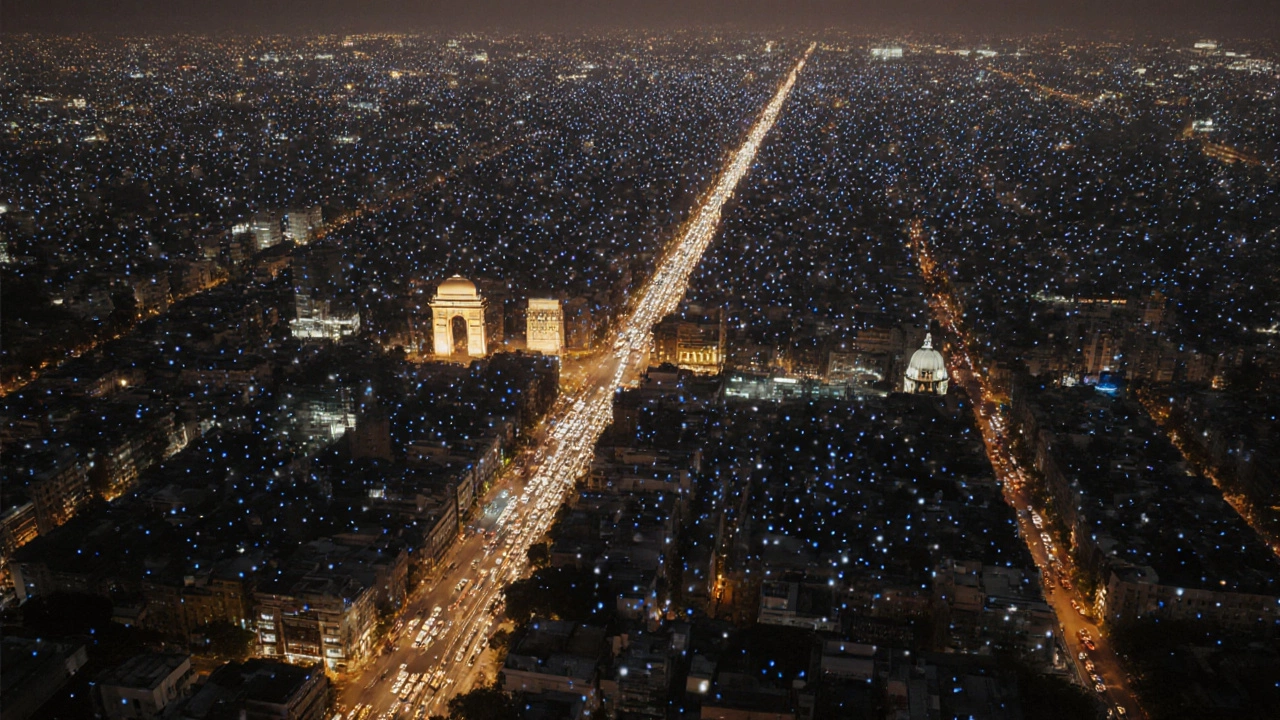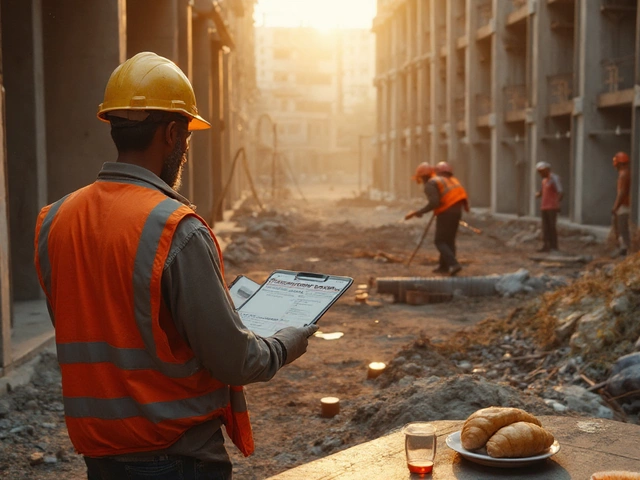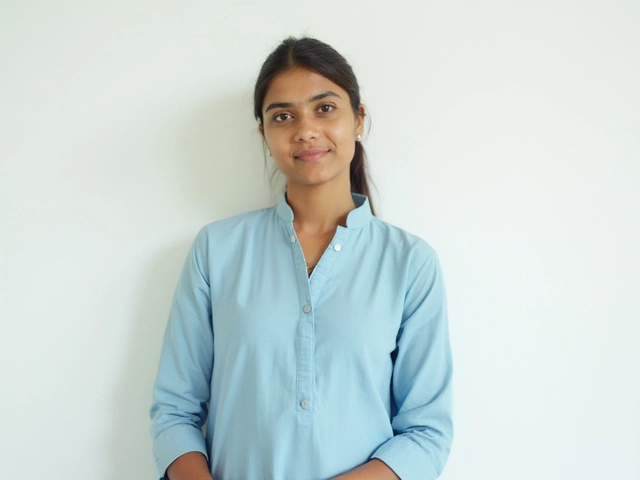Indian City CCTV Counter
Delhi
Capital security mandate, traffic monitoring
Mumbai
Port authority, tourism hotspots
Bengaluru
Tech-sector demand, private partnerships
Kolkata
Historic zones, flood monitoring
Chennai
Coastal security, industrial parks
Compare Cities
Ever wondered which Indian metropolis is dotted with the most watchful eyes? In 2025 the answer isn’t as obvious as you might think, and the numbers reveal some surprising patterns.
CCTV cameras India have become a cornerstone of urban safety, but the story varies wildly from Delhi to Bengaluru. Below you’ll find a clear breakdown of the top cities, why they rank where they do, and what this means for residents and policymakers.
Quick Snapshot
- Delhi tops the list with roughly 1.2million cameras installed by early 2025.
- Mumbai follows closely, trailing by about 15%.
- Bengaluru, Kolkata, and Chennai round out the top five, each benefitting from Smart City Mission funds.
- Camera density (per 1,000 residents) is highest in Delhi, at 14.8 devices.
- Future growth will be driven by AI‑powered analytics and tighter privacy regulations.
What Do We Mean by “CCTV Camera”?
CCTV cameras are video surveillance devices installed in public and private spaces to monitor activity in real time. They range from simple analog boxes to high‑resolution IP units that feed footage into city‑wide command centers.
How We Counted the Cameras
Data comes from three primary sources:
- Annual reports from the Ministry of Home Affairs that publish nationwide surveillance statistics.
- Implementation dashboards of the Smart City Mission, which detail camera roll‑outs in 20+ selected cities.
- Municipal corporation budgets and press releases, cross‑checked with Right to Information (RTI) filings where available.
Where official numbers conflict, we took the higher figure to avoid under‑reporting. All estimates are rounded to the nearest ten thousand.
Top Indian Cities by CCTV Count (2025)
| City | Estimated CCTV Cameras | Cameras per 1,000 Residents | Key Drivers |
|---|---|---|---|
| Delhi | 1,200,000 | 14.8 | Capital security mandate, extensive traffic monitoring, higher crime‑prevention budget |
| Mumbai | 1,030,000 | 13.2 | Port authority surveillance, tourism hotspots, state‑led Smart City upgrades |
| Bengaluru | 820,000 | 12.5 | Tech‑sector demand, crime‑hotspot mapping, private‑public partnership projects |
| Kolkata | 560,000 | 9.8 | Historic preservation zones, flood‑monitoring cameras, Smart City fund allocation |
| Chennai | 490,000 | 9.5 | Coastal security, industrial park monitoring, aggressive traffic‑violation enforcement |
Why Delhi Leads the Pack
Delhi’s dominance isn’t just a numbers game. The capital hosts several high‑risk zones: diplomatic enclaves, major transit hubs, and densely packed market areas. The Public Safety department launched a city‑wide upgrade in 2022, installing AI‑enabled cameras that can flag unattended bags or unusual crowd movements. Budget-wise, Delhi allocates roughly 2% of its municipal expenditure to surveillance-double the national average.

Factors That Drive Camera Density
Four core variables explain why some cities have more eyes than others:
- Population size and urban sprawl. Larger metros need more coverage points to avoid blind spots.
- Crime statistics. Cities with higher reported incidents tend to boost camera numbers as a deterrent.
- Smart City Mission funding. Cities designated as ‘Smart Cities’ receive central grants specifically earmarked for surveillance infrastructure.
- Economic activity. Tourist corridors, financial districts, and industrial zones attract private investment in security cameras.
For example, Bengaluru’s tech parks contributed 30% of their own surveillance budget, supplementing state funds.
Benefits of a Dense Camera Network
When used responsibly, a high camera count delivers tangible gains:
- Crime reduction. Studies by the National Crime Records Bureau (NCRB) show a 12% drop in thefts in districts where camera density exceeds 10 per 1,000 residents.
- Traffic management. Real‑time video feeds help authorities adjust signal timings, cutting average commute times by up to 8%.
- Disaster response. Flood‑prone areas in Kolkata use waterproof cameras to coordinate rescue teams more efficiently.
Challenges and Controversies
More cameras also raise concerns:
- Privacy. With facial‑recognition trials beginning in Delhi, civil‑rights groups demand stricter data‑retention policies.
- Maintenance costs. Each camera’s average lifecycle is three years; replacing 1.2million units in Delhi costs over ₹1.5billion annually.
- Data overload. Without AI analytics, operators are swamped by raw footage, reducing actionable insights.
Looking Ahead: AI, Analytics, and Regulation
By 2028, experts predict that 70% of Indian municipal CCTV networks will integrate AI modules capable of:
- Detecting loitering or suspicious movement patterns.
- Cross‑referencing faces against a vetted criminal database (subject to Supreme Court rulings).
- Generating automated traffic‑violation tickets.
The upcoming Data Protection Bill is slated to enforce stricter audit trails, meaning cities must log who accesses footage and why. This could reshape procurement strategies, pushing vendors toward privacy‑by‑design solutions.
How Residents Can Engage
If you live in one of these cities, you can:
- Check your local municipal website for a public camera map-many now publish live feeds.
- Participate in citizen‑oversight committees that review surveillance policies.
- Advocate for transparent data‑retention schedules and clear grievance redressal mechanisms.
Active community involvement ensures that surveillance serves safety without eroding civil liberties.
Frequently Asked Questions
Which city has the most CCTV cameras in India?
Delhi leads with an estimated 1.2million cameras installed as of early 2025, according to Ministry of Home Affairs data.
How reliable are the camera counts?
Counts combine official government releases, Smart City Mission dashboards, and municipal budget disclosures. While exact numbers may shift with new installations, the ranking of the top five cities remains stable.
What is the camera density per 1,000 residents?
Delhi has about 14.8 cameras per 1,000 residents, Mumbai 13.2, Bengaluru 12.5, Kolkata 9.8, and Chennai 9.5.
Are there privacy protections for the footage?
The upcoming Data Protection Bill requires public agencies to maintain audit logs, limit retention periods (typically 30‑90 days), and obtain clear consent for facial‑recognition use. Cities are still drafting detailed guidelines.
Will AI replace human operators?
AI will augment operators by flagging incidents, but human oversight remains essential for context, privacy compliance, and legal accountability.





